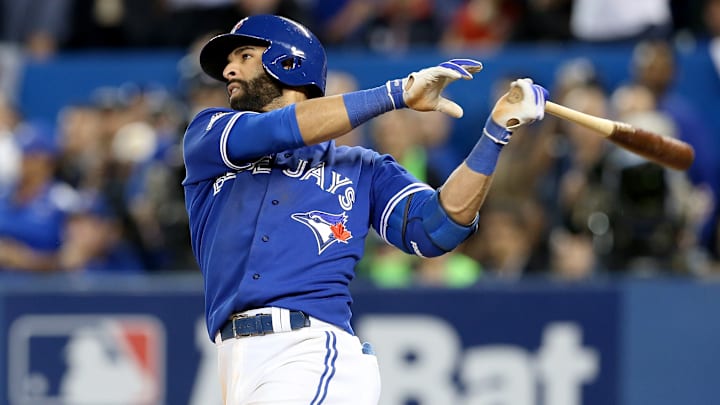No. 1 José Bautista
In August 2008, the Blue Jays made a trade that caught the attention of practically nobody across the league. They acquired José Bautista, a journeyman who had played for four different clubs in his five-year career, from the Pittsburgh Pirates for a player to be named later. That turned out to be Robinzon Díaz, who hit just one home run in his career and soon was working as a bullpen catcher.
Bautista could’ve been claimed off waivers by any team before the trade to the Blue Jays became official, but there wasn’t much of a market for a career .239 hitter who had never hit more than 16 home runs in a season. So he became a Blue Jay and fell into the capable hands of Cito Gaston.
Gaston imparted a simple lesson to Bautista: start early. If you think you’re starting too early, then start earlier than that. Gaston got Bautista to refine his timing and unlock his power potential. In 2010, that potential broke out in a big way.
Bautista hit 54 home runs that season, nearly matching his previous career total and becoming the first player in Blue Jays history to reach the 50-home run milestone. He added another 43 homers in 2011; Bautista hit 18 more home runs than any other player in the league over those two seasons. A true superstar, one who nobody seemingly wanted earlier in his career, was born.
Bautista made six straight All-Star Game appearances with the Blue Jays. He and Carlos Delgado are the only Blue Jays to hit at least 40 home runs in a season three times. He’s the Blue Jays' all-time leader in WAR and trails only Delgado with 288 career home runs. His 766 RBI are third-most in franchise history behind Delgado and Vernon Wells.
As good as Bautista was for his first years in Toronto, the club didn’t make the postseason until 2015. In their first playoff series since the 1993 World Series, the Blue Jays fell behind the Texas Rangers 2-0 before forcing a decisive fifth game back at the Rogers Centre. Then, in the midst of the wildest and strangest inning the team had ever played, Bautista came up to face Sam Dyson with two runners on and the score tied 3-3.
On a 1-1 count, Bautista hit a fastball deep into the left center field seats. What happened after has lived on in Blue Jays lore, as Bautista stood at the plate admiring the majestic flight of the ball before tossing his bat high up in the air. The “Bautista Bat Flip” became the most iconic image for the franchise since Carter’s leap around the bases more than two decades earlier and further solidified his place in history.
Bautista left the Blue Jays after the 2017 season. He made his return the following year, this time as a member of the New York Mets, and received a rousing ovation from the Blue Jays faithful. “It feels great, it feels like nothing has changed,” he said upon his return. “It’s a good feeling to be back. Obviously, a lot of emotions and a lot of memories. You like to be able to enjoy those. It has been great so far.”
He was a mediocre talent bouncing around the majors before his journey took him to Toronto. With the Blue Jays, he became “Joey Bats,” a stunning story of transformation and redemption for a player who proved it’s never too late to start unlocking your true potential.
